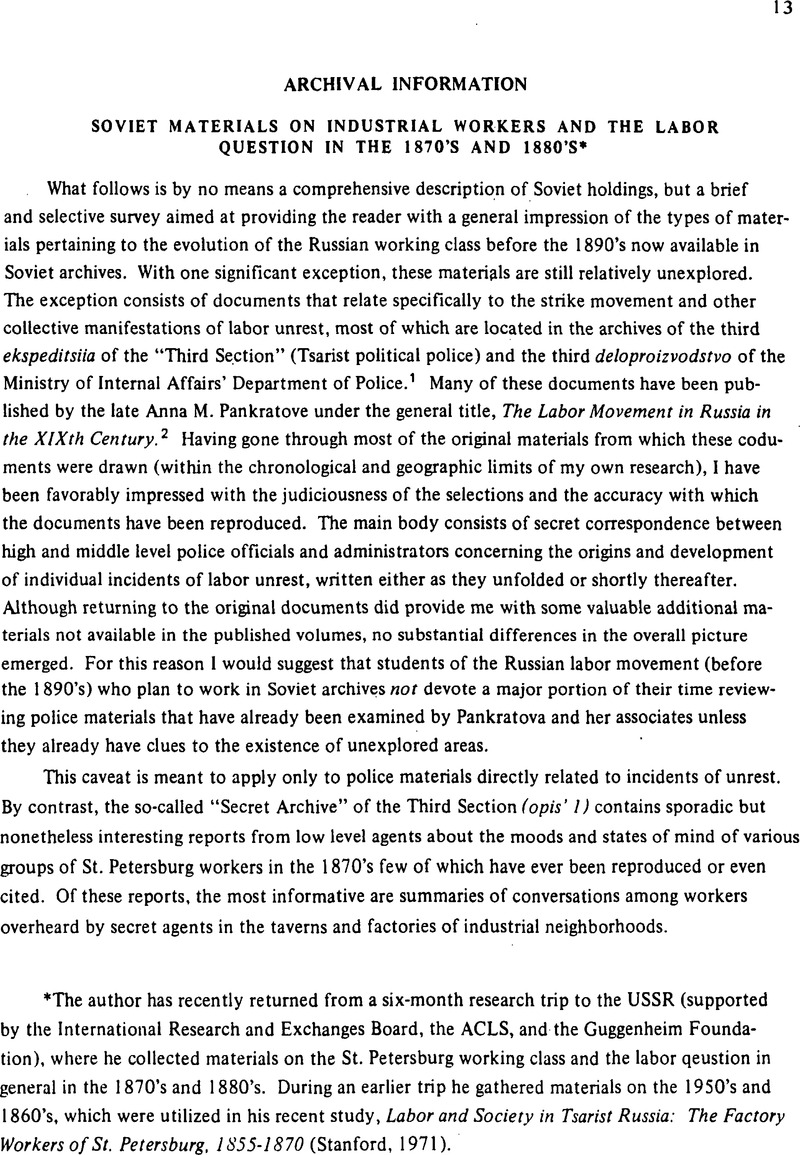No CrossRef data available.
Published online by Cambridge University Press: 16 December 2008

The author has recently returned from a six-month research trip to the USSR (supported by the International Research and Exchanges Board, the ACLS, and the Guggenheim Foundation), where he collected materials on the St. Petersburg working class and the labor qeustion in general in the 1870's and 1880's. During an earlier trip he gathered materials on the 1950's and 1860's, which were utilized in his recent study, Labor and Society in Tsarist Russia: The Factory Workers of St. Petersburg, 1855–1870 (Stanford, 1971).
1 Fond 109Google Scholar and fond 102Google Scholar respectively of the Central State Archive of the October Revolution (TsGAOR) in Moscow. The Third Section materials terminate in 1880; thereafter the functions of the Third Section devolved upon the Department of Police.
The reading room for foreign scholars using TsGAOR materials is actually located at the neighboring Central State Archive of Ancient Acts (TsGADA), on Bol'shaia Pirogovskaia, 17.
2 Rabochee dvizhenie v Rossii v XIX veke. Sbornik dokumentov i materialov. The volumes covering the period under discussion are: Vol. I, Part II (2nd ed., Moscow, 1955)Google Scholar; Vol. II, Parts I and II (Moscow, 1950); Vol. III, Part I (Moscow, 1952).
3 The Central State Historical Archive of the USSR (TsGIA) and the Leningrad State Historical Archive (LGIA), respectively.
4 Of particular interest in this regard are the archives of the Department of Laws of the Council of State (fond 1149Google Scholar, especially opis' 9Google Scholar, delo 31)Google Scholar and the Ministry of Justice (fond 1405Google Scholar, especially opis' 70Google Scholar, delo 7290). Both are located in TsGIA.
5 Each factory archive has a separate fond number.
6 “Archives in the Soviet Union: Their Organization and the Problem of Access,” The American Archivist, Vol. 34, No. 1 (01 1971), pp. 27–41.Google Scholar